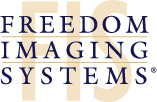Central Scheduling
How long does it take to find an order and schedule a patient procedure?
If your patient's are experiencing long hold times and representatives are frustrated with a ”search and find” mission to locate ordering requisitions — we have a solution for you!

With our RICAR enterprise content management software, requisitions coming from outside ordering doctors are digitally faxed, landing in workflow within seconds for indexing and scheduling. Now, when a patient calls in the representative can pull up the patients record quickly in RICAR's FreeWf (workflow), use the healthcare system's scheduling system to book the appointment. RICAR automatically prints the records to a printer located at the diagnostic testing center 48-hours prior to the appointment. No search and find at diagnostic center either. All the requisitions are there waiting for them in chronological order when they start the day. Can't get much easier than that.
As healthcare systems consolidate and grow, it is advantageous to maintain patient services within the system. Benefits ranging from eliminating duplication of testing and services as well as financial considerations are all part of the decision to creating a central scheduling department within your hospital or healthcare system.
Is your organization trying to manage hundreds of orders on a daily basis? Have you added another fax machine in hopes of keeping up with the success of your central scheduling iniative?
Take a look at how Freedom can create a solution and help you easily manage the workload.
Challenges
- Multitude of fax machines
- Eliminate Manual Filing and Sorting of Orders
- Simplify Retrieval and Distribution throughout the Enterprise
- Space Utilization
- Security & Audit
- Corporate and Government Compliance
How it worked BEFORE Freedom deployed their solution...
Imagine this scene: multiple fax machines are receiving orders from physicians across the healthcare system. As the plethora of orders are received, personnel remove them from the fax machine and placing them in a file cabinet and ordering them by the first letter of the patient's last name only — since the volume is so large, they don't have time to put them in order by the entire last name. As patients call into the central scheduling department to arrange their appointment for a number of diagnostic services provided by the health system (i.e., x-ray, MRI, CAT scan, etc.), the scheduling representative puts the patient's call on hold and walks over to the file cabinet to retrieve the patient's order form faxed in from their physician's office. Most times, the order is found and retrieved relatively quickly even after searching through the entire last name file. however, if the scheduling representative does not find the order in the file, they must search through all the faxed documents that have not been filed yet to ensure the order hasn't already been received. Once (if) found, the rep reconnects with the patient (who has been on hold) and the diagnostic procedure is scheduled at a convenient location, date and time for the patient. Once scheduled, the order is placed in a large mail slot set up within the department that has a cubby-hole for each diagnostic center within the healthcare system. In order to make sure the diagnostic centers are aware of the scheduled procedures, the central scheduling department would then either fax the orders to the centers approximately 48 hours before the scheduled procedures (Wednesday's procedures would be faxed on Monday); in some instances, couriers would be used for distribution.
The concept of a central scheduling department is a great idea and the return on investment is there to justify the effort to keep those revenues within the healthcare system. But adding more fax machines and more personnel to maintain the orders is a losing proposition.
How it worked AFTER Freedom deployed their solution...
Having a patient wait on hold while the order was found is a big problem. The solution needed to make sure it was easy to find a patient's order — all without putting the patient on hold. That personal contact is tantamount to the success of the program; being on hold for even a couple of minutes is too long.
So we started with using a digital fax server to replace the fax machines and capture all the paper-based documents with a FreeImport folder and to automatically create digital documents. Orders were automatically stored into the Freedom system and immediately started a workflow for indexing and scheduling. Once a document was faxed in, it landed within workflow within seconds and the first step was an indexing queue. As soon as received, a clerk would add the patient name and DOB to the indexing. Now, when a patient called in, the scheduling rep would simply search for the order in the FreeWf application.
Once found, the rep would use the healthcare system's scheduling system to book the appointment for the patient and update the indexes within the Freedom system that includes site, date and time of appointment. Now that all front-end manual processing has been eliminated, let's focus on the back end.
The diagnostic centers need time to prepare for the patient and in many cases the medical staff will prepare charts and required information the day prior to the appointments. To automate the faxing and couriering of records from central scheduling to the diagnostic centers, the Freedom system automatically prints the records to a printer located at the diagnostic center 48 hours prior to the appointment. The printing is configured to work on any printer in their office and is configurable to meet the needs of each diagnostic center.
Ready for the latest and greatest? Familiar with HL7 files?
Digitalizing the paper and creating automatic workflows and distribution allows a central scheduling center to improve their profitability — proven and without a doubt. The next step in automation is taking HL7 or HL7-CDA files to eliminate the entire frontend process of the central scheduling department. Freedom can create a system document from the HL7 file or accept CDA files (MIME) from any practice management, scheduling, EMR, EHR or any system that can create these standardized files. If you find that one physician group or IPA is a large percentage of your work, speak to a Freedom solution designer to explain how the RICAR system can work to automate your processes.
 734.327.5600
734.327.5600 Contact Us
Contact Us

